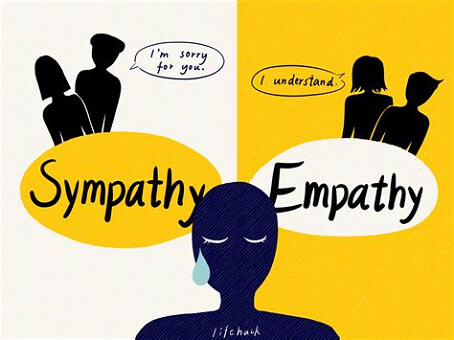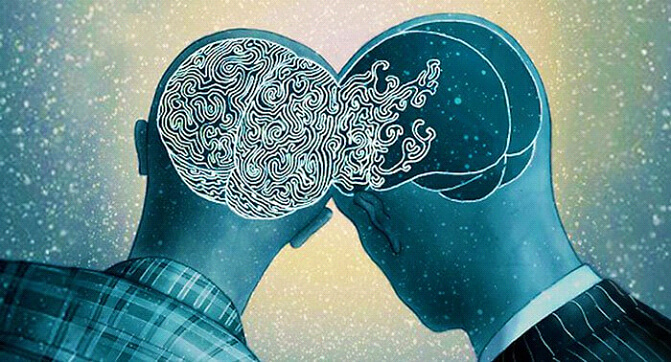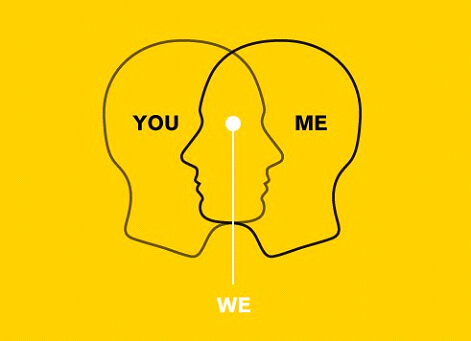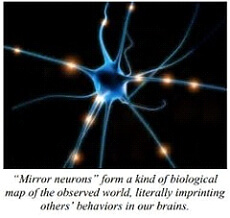What image comes to mind when you hear the word empathy? If you are like many people your thought is of someone who is nice, polite and says pleasant things – in other words, soft. Or you may confuse empathy with sympathy. You may think that showing empathy means that you agree with the other person’s perspective. Empathy is none of those things. Being empathic means being able to “emotionally read” other people.
Empathy is the ability to tune in to another person’s perspective. It is the ability to see through another person’s eyes and to understand his or her frame of reference – whether you agree with it or not. In their book The EQ Edge Steven Stein, Ph.D. and Howard Book, MD, describe empathy as “the ability to non-judgmentally put into words your understanding of the other person’s perspective.”

Consider the encounter below.
Mary is a newly hired sales representative. Having recently come from a clinical environment she is struggling with some of the requirements of working in a corporate organization. She is having a discussion about her challenges with a colleague.
Mary: I’m really struggling with this job. Between trying to learn the new product information, figure out my territory and keep up with the reports, I am falling behind on the number of sales calls I need make. Then at the end of the day I have so much studying to do that I am having to stay up late every night to try to get through it. I thought it would be temporary until I got the hang of the job but it’s not getting better and now I’m starting to get flack at home because I’m not as available to my family as I used to be. It’s really ridiculous to expect us to master all this stuff in so short a time.
Colleague: I’m so sorry you’re having problems at home over this stuff. I found it pretty challenging when I started too but don’t give up. Believe it or not, you’ll get used to it. And it really does get better.
Was Mary’s colleague showing empathy? Actually, no. Instead, the colleague expressed sympathy. Sympathy puts our own feelings into words. (“I’m so sorry you’re having problems at home…”) It does not express any understanding of what the other person is feeling. The statement that follows continues to refer to the colleague’s experience without offering any understanding or support.
Empathy is an extremely powerful interpersonal tool.
Daniel Goleman, author of the 1995 New York Times bestseller Emotional Intelligence, describes three kinds of empathy.

The first, Cognitive Empathy, he calls “the ability to see the world through others’ eyes.” It is a mind-to-mind connection that gives us a mental sense of how another person thinks. When engaged, this kind of empathy allows us to understand the other person’s frame of reference. Dr. Rob Hicks, Professor of Clinical Psychology at the University of Texas Health Science Center at Dallas, points out that “to experience this kind of empathy we must suspend our perspective, opinion and judgment long enough to understand someone else’s thoughts, feelings, and struggles – from his or her point of view.” Putting that understanding into words strengthens relationships and helps create collaborative encounters. Cognitive empathy promotes intellectual exploration and helps people to think more productively.

In the second kind of empathy, Emotional Empathy, we actually feel what the other person is feeling. This is an instantaneous body-to-body connection that occurs when we tune into another person’s emotional signals and automatically mirror them. Daniel Siegel, a UCLA psychiatrist, calls the brain areas that create this resonance “we” circuitry.
People with this kind of empathy are innately perceptive of the emotions of others. They can sense what other people are feeling whether it is joy, pain, or sorrow, and you react appropriately. They don’t just notice how others are feeling; they also understand and share their emotions. This ability allows them to build trust with people quickly. They are able to communicate more openly, trust grows and what was simply a relationship can become an alliance.

The third variety Goleman calls Empathic Concern and describes it as a heart-to-heart connection. This form of empathy is demonstrated when someone expresses caring about another person. An example of this kind of empathy is when one colleague reassures another that they will give them whatever help they need to complete their project on time.
Let’s revisit our two sales representatives from the first page:
Mary: I’m really struggling with this job. Between trying to connect with the other team members and make contact with clinicians in my region I am falling behind on the number of presentations I need to do. Then at the end of the day I have so much studying on disease states that I am having to stay up late every day to try to get through it. I thought it would be temporary until I got the hang of the job but it’s not getting better and now I’m starting to get flack at home because I’m not as available to my family as I used to be. It’s really ridiculous to expect us to master all this stuff in so short a time.
Colleague: “Sounds like you are feeling pretty overwhelmed (or defeated) right now. And feeling like you’re letting your family down must make you feel even worse. I can certainly understand how you might feel that expecting you to grasp so much new information so quickly is unrealistic.” Cognitive Empathy
I understand your feeling of frustration and it makes me really sad that you are having such a hard time. Emotional Empathy
I’ll be happy to set aside some time to help you with the product information. And please feel free to call me any time you need to talk. I want you to know that as hard as it is right now, you can get past this and I will help you in any way I can. Empathic Concern
Put Empathy To Work For You
Now that you see what empathy looks and sounds like you are ready to work at developing it.
If you already possess the quality you only need to be aware of it and intentionally apply it in your interactions with others.
But what if you don’t have it? Is there hope? Are you lost? Do you fake it and hope no one notices? No, it’s easier than that. The good news is, just like all other aspects of Emotional Intelligence, Empathy can be learned and improved. You see, we are all hard-wired to be empathic; we just have to be intentional about developing this innate behavior.

In 1999 researchers in Parva, Italy discovered that our brains have unique neurons called mirror neurons. These mirror neurons, located right below the prefrontal cortex, activate our ability for building empathy and bonding with others.
In her book Conversational Intelligence, Judith Glaser says that when we connect emotionally with someone in conversation we tend to mimic their posture, the inflection of their voice, their gestures, and their energy which activates our ability for higher levels of bonding. Levels of the neurochemical oxytocin are increasing as we interact creating a reinforcement of trust.
Since we all have these mirror neurons it remains for us to intentionally activate them. And here’s how –
Fine tune your observation skills. Daniel Goleman in his book, Social Intelligence, tells us that “the more sharply attentive we are, the more keenly we will sense another person’s inner state.”
Give Full Attention
Mirror neurons kick in strongest when we observe a person’s emotions. Watch facial expressions, eye expressions, body position, and gestures. Intentionally pay attention to a person and do not allow yourself to be distracted by your own thoughts or by other things around us – No Multi-Tasking!
Put your Smartphone and computer away and minimize distractions. Practice active listening.
Active Listening
Active listening seeks to understand, not just to hear. Listen with your ears, eyes and mind. Pay attention to the other persons’ body language, to their tone of voice, to the subtle emotions behind what they are saying to you, and to the context. Body language often communicates what a person really thinks or feels, even when their verbal communication says something quite different.
Be Aware Of Your Non-verbal Communications
Work to increase your awareness of your own non-verbal expressions. Ask someone you trust to give you honest feedback about your non-verbal communication in various situations – especially ones that are more emotionally charged. Notice with whom you have difficulty being empathic and examine why.
Transformational Leaders Have Empathy
Wherever you are in your personal development include a plan for developing Empathy. Make it intentional then Do It! Empathy is a “Leadership Must Have.” Why? Because showing genuine empathy builds trust. And people will only follow leaders they trust.
